How to Create a Sales Budget for Scalable Success
Casey O'Connor
A sales budget is a financial planning document that outlines an estimate for the total amount of revenue a sales team estimates they will generate during a defined period of time. Sales budget figures are usually presented in terms of both dollars and number of units.
The sales budget is created by the sales team but used by a number of other departments throughout an organization. These documents help organizations create stronger sales goals, strategize more effectively, and maximize their profit.
In this article, we’ll go over everything you need to know about sales budgets, including what they are, why they’re so important, and how to create them with your team.
Here’s what we’ll cover:
- What Is a Sales Budget?
- Why Is a Sales Budget Important?
- Elements of a Sales Budget
- How to Create a Sales Budget
- How to Track and Adjust Your Sales Budget
- Sales Budget Best Practices
- Sales Budget Examples
What Is a Sales Budget?
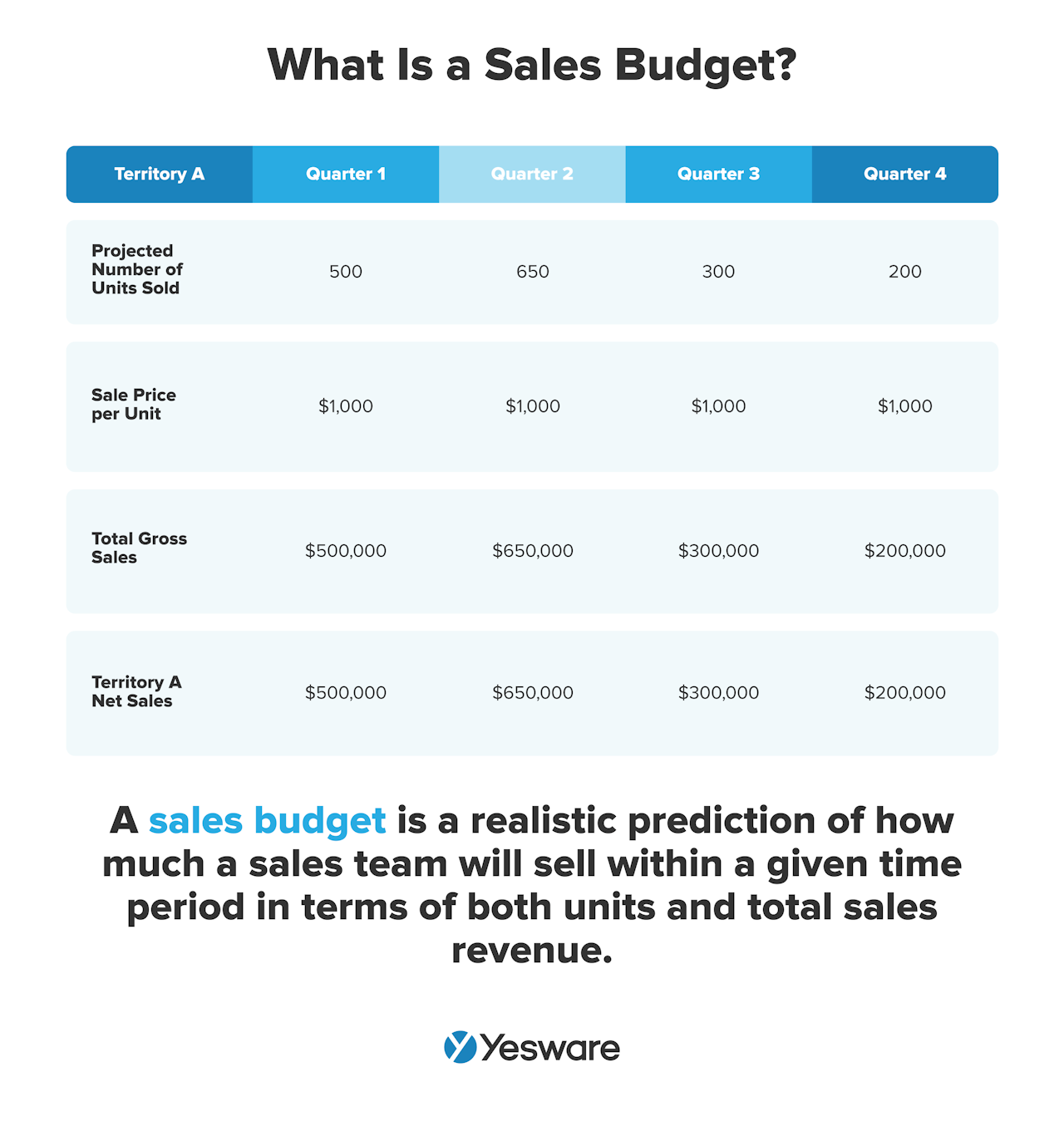
A sales budget is a realistic prediction of how much a sales team will sell within a given time period in terms of both units and total sales revenue.
The sales budget helps sales teams and those adjacent to them make accurate, realistic projections about how much revenue they expect to generate. This kind of reliable reference point is extremely important for goal setting and sales forecasting.
Sales budgets can be created on a monthly, quarterly, or annual basis. Many teams opt to create them yearly, as annual sales budgets give a very effective high-level view of the expected performance of a sales team.
But for teams just beginning the process of creating a sales budget, you may want to consider using a month-long or quarter-long timeframe. These shorter, more manageable durations of time can make it easier to master the process and pinpoint successes and areas of growth.
Regardless of the length of time they define, sales budgets always project the number of units that will be sold, at what price(s), and an estimate of the ultimate total revenue for that period.
Sales budgets take into account both forward-looking and historical data. They consider seasonal demand, market trends, competitor positioning, the health of the economy as a whole, and more.
Even short-term monthly sales budgets still need to be very effective at coalescing a broad range of data points, assumptions, and hypotheses into a cohesive projected plan.
Though the sales budget in its final document form appears straightforward and clear-cut, it actually requires a deep understanding of nuance, data analysis, and hypothesis, as well as strong communication and collaboration.
Why Is a Sales Budget Important?
Sales budgets help sales teams and companies at large set ambitious goals, maximize their resources, and highlight overall financial performance.
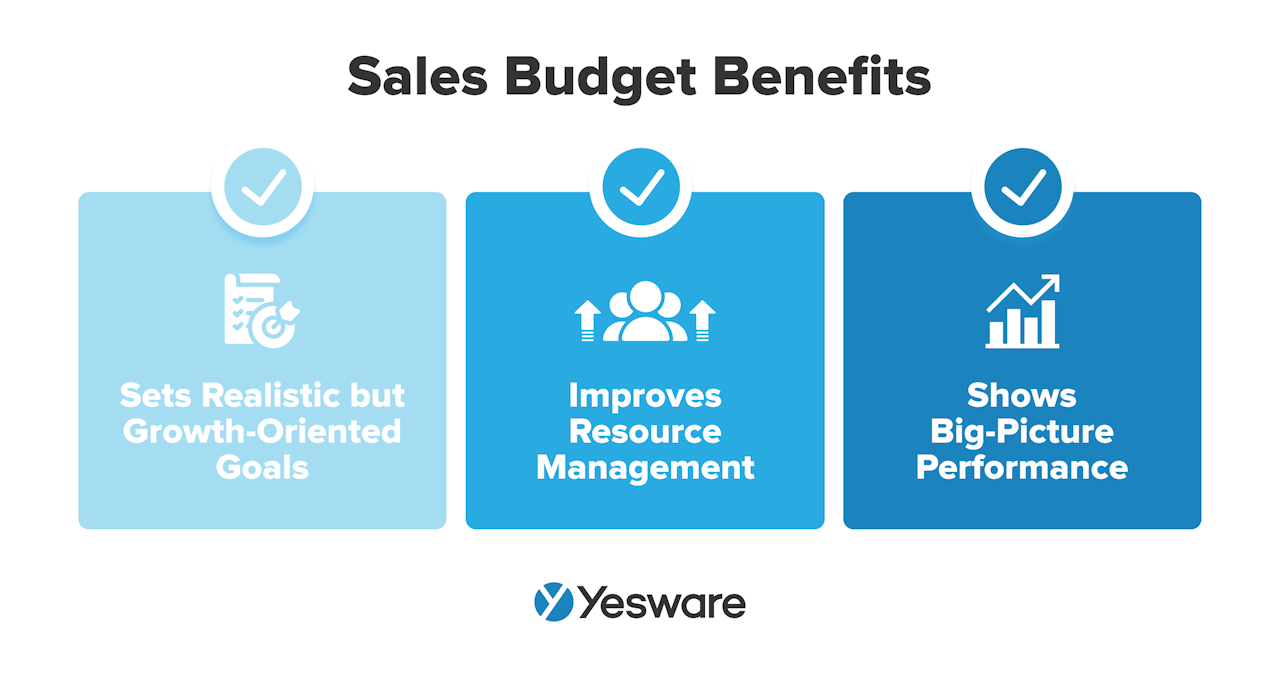
Sets Realistic but Growth-Oriented Goals
Sales budgets help sales team members and the company at large create effective, attainable, progressive goals.
Good sales budgets — especially longer-term ones, like quarterlies or annuals — also usually include shorter-term performance targets, making it easier for sales reps to stay on track along the way.
In other words, a sales budget is kind of like a roadmap for sales teams and those adjacent to them. It helps everyone get on the same page about what kind of profitability to expect and how they need to perform to meet their quotas, budget, and sales forecasts.
Improves Resource Management
One of the purposes of a sales budget is to plan for and prioritize expenses.
The sales budget document is instrumental for managers and C-suite executives in their financial planning process, including big line items like operating expenses, capital expenditures, and cash flow. They rely on these projections to make data-driven decisions about how to allocate resources.
Shows Big-Picture Performance
Sales budgets help sales teams create attainable goals that can be tracked and measured. This makes it easy for teams to measure their own success. The sales budget helps keep everyone on track with a big-picture snapshot of how the pipeline is performing.
Overall, sales budgets bolster the decision-making process, especially around finances. They keep sales teams on track and motivated to reach their goals.
Elements of a Sales Budget
Though the details and calculations in your sales budget will be entirely unique to your team, there are some common elements that are standard.
Cash Flow Statement
A cash flow statement (otherwise known as the CFS) gives an overview of how cash (and/or cash equivalent) flows in and out of your sales operation.
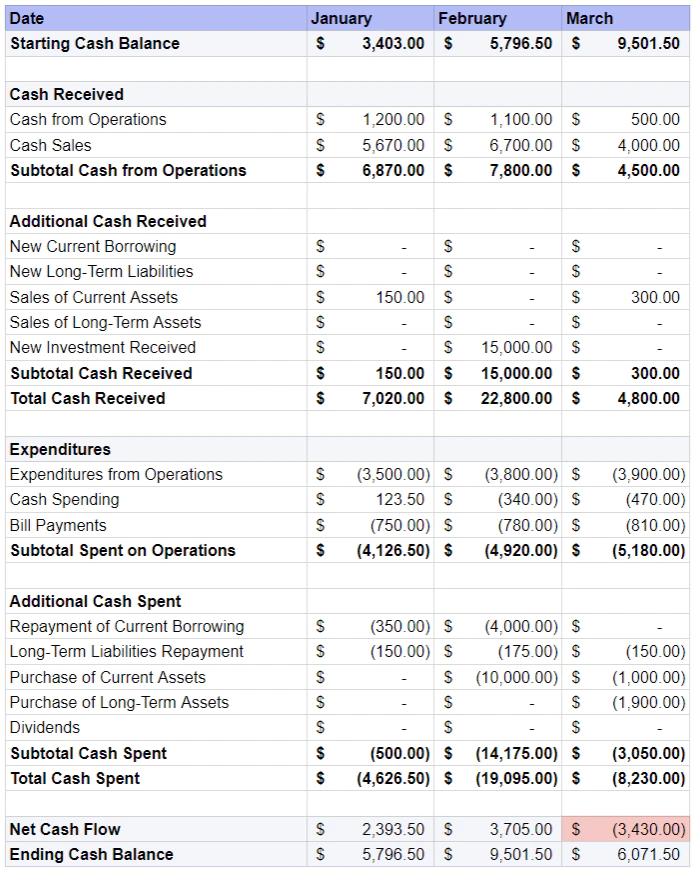
The CFS gives all stakeholders a transparent view of how your team spends money (in terms of both quantity and priority) versus how much they generate.
The CFS may include information on transactions like:
- Interest payments
- Rent or mortgage payments
- Income tax payments
- Sales receipts
A CFS offers an accurate and realistic look at how the sales team manages its operating expenses and prioritizes available resources.
Balance Sheet
A balance sheet is a document that lists all of your organization’s assets, liabilities, and equities up to a certain reporting date (usually quarterly or monthly).
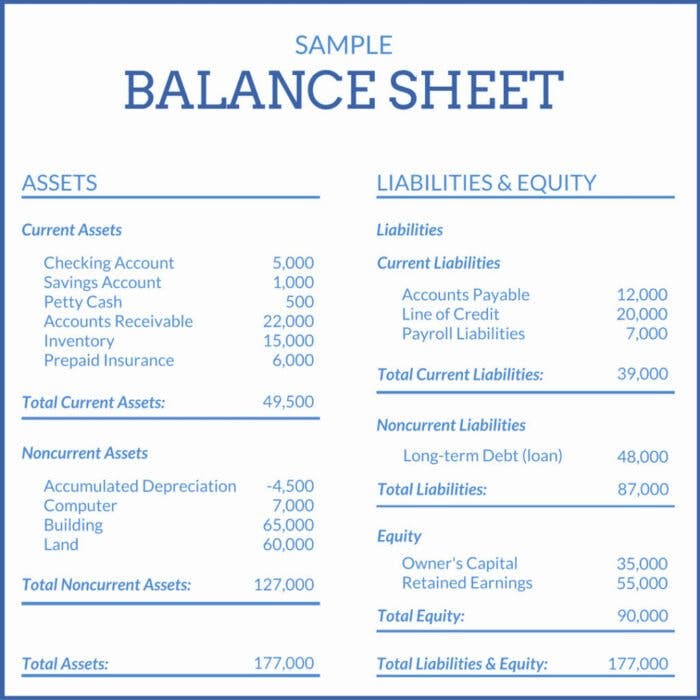
Investors rely on balance sheets to make sound investment decisions, as they provide good insight into the overall performance of the sales team.
Income Statement
An income statement shows net income and is a general picture of your team’s or company’s current financial state.

The formula for net income is:
Net Income = (Revenue + Gains) – (Expenses + Losses)
Income statements always represent a specific period of time.
A sales budget must also include your team’s projected sales volume in the number of units, the price per unit (also known as the sales price), and the projected sales revenue.
Depending on your team’s or company’s specific reporting needs, your sales budget may also include the following elements:
- Sales forecast
- Sales by product or service
- Sales by territory
All of the elements of a sales budget come together to give stakeholders a reliable prediction of how much revenue a sales team can expect to generate in a given time period.
How to Create a Sales Budget
The following steps will help your team create a sales budget for a month, quarter, or year.
1. Choose a Time Frame
In fact, the very first step of creating your sales budget is to determine the time period for which you’d like to create projections.
Many teams regularly create annual sales budgets, but monthly or quarterly documents are valuable, too, and can give sales teams who are just learning the process more opportunities to practice.
Ultimately, it will depend on the unique needs of your team and organization. Some companies — those with heavy seasonal trends, for example — might find more benefit from shorter-term sales budgets.
2. Determine Your Inventory and Prices
Before you make calculations about cash flow and predictions about the number of units you’ll sell, you first need to know what you have on hand — and how you plan to move it.
Take stock of how many units of product you have available to sell and at what cost you plan to sell it. Make sure you note any variations you anticipate, like planned promotions or seasonal demand fluctuations and/or inventory shortages.
3. Study Historical Sales Data
Even your very first sales budget doesn’t need to be a total shot in the dark; you can use available historical sales data for a similar fixed period of time of the same duration to help you get a sense of what to expect performance-wise. This can help you make a solid baseline prediction.
4. Look at the Industry (Especially Your Competition)
You’ll also get some valuable insight by looking at trends and data from peers and competitors in your market.
Strong competitive analysis can give a lot of confidence to your predictions.
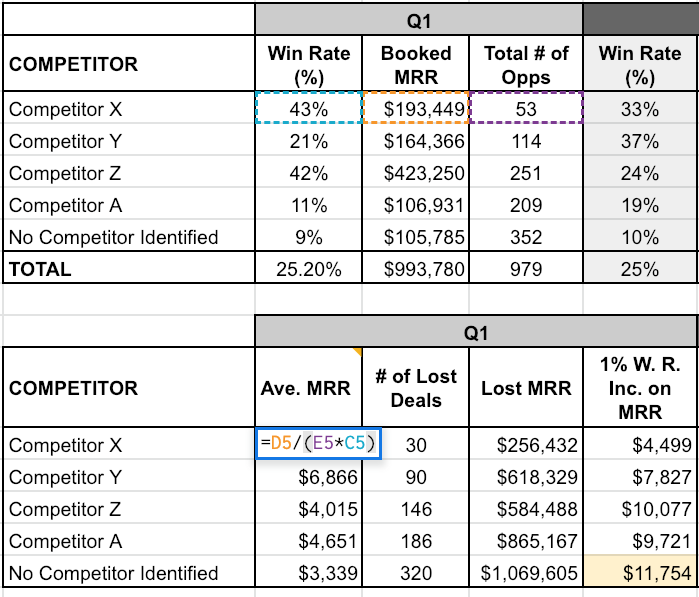
The U.S. Bureau of Labor Statistics website is also a trove of knowledge and statistics that can add validity to your preliminary sales budgets.
5. Survey Sales Reps and Customers
The last bit of “field research” you need to do to create a sales budget is in-house.
Gather intel from your sales reps and successful customers. Both of those groups of people can provide authentic, real-world feedback about how your offer holds up in the market.
What makes customers love it? How long do they stay loyal? What’s the average customer lifetime value (LTV)? All of this insight will help create a more reliable sales budget document. Surveys are an easy way to achieve this.
6. Identify Market Trends
It’s now time to look at the current market. Use real market data to analyze trends and make predictions about how the market will move in the time period of your sales budget.
7. Take Stock of Your Current Pipeline
Next, look at your pipeline. Lead scoring can help you gauge how likely each of your prospects are to ultimately convert.
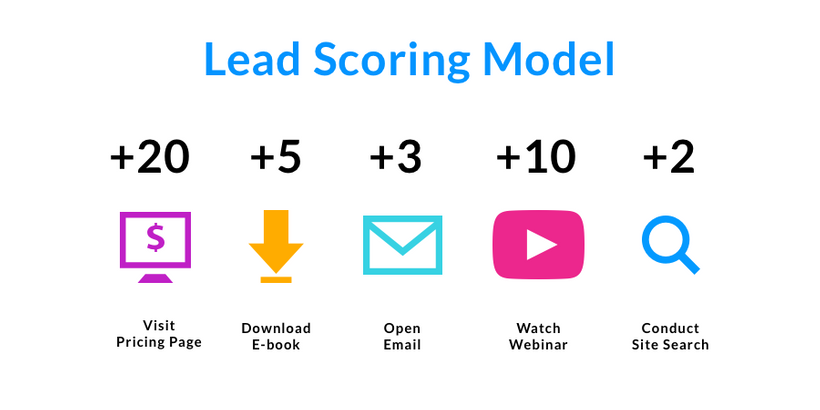
This will also help define your sales budget more accurately.
8. Create Your Budget
With all of your data at your fingertips, you have everything you need to create your sales budget. The examples later in this article can give you an idea of how to format the sales budget document.
How to Track and Adjust Your Sales Budget
Though it’s ideal when sales budgets are very accurate from the start, the reality is that they often need to be adjusted as time goes on.
The sales budget is a living, breathing document, and revising it as circumstances change is more favorable than relying on a defunct document that is no longer serving its purpose.
Monitor Actual Sales
The first step in adjusting your sales budget is to keep an eye on what’s actually going on in the sales field relative to what you projected in your sales budget.
Are you seeing a minor lag compared to what you predicted, or will it be next to impossible to match your budget as written? Take stock of what’s actually achievable by looking at the real numbers coming in.
Analyze Variances
Ask your marketing and sales teams to look at the sales process and try to pinpoint where there could be issues.
Is there a problem with demand, or are there more (or stronger) competitors than you planned for? Are your sales strategies on point for the target market?
It’s normal for there to be a slight or even moderate mismatch between your sales budget and reality, but the key to success is figuring out where the discrepancy lies.
Tip: Learn what content matters most to your target market with Yesware’s powerful data analytics tools.
Adjust the Sales Volume and Price
If your team’s unexpected performance can’t be explained through sales process analysis, it may be time to adjust your expected sales volume and/or sales price. This can help your team reorient toward the sales budget goals.
Revise the Sales Forecasts
If you are, in fact, noticing a sure and steady decline in sales, you will also need to adjust your sales forecasts.
Update the Sales Budget
At the end of the day, it’s okay to adjust your sales budget if your reality isn’t matching your prediction, whatever the reason may be. It’s important to ensure that your sales budget reflects a realistic outcome; this demonstrates transparency, achievability, and commitment to accuracy.
Be sure to communicate to your team any updates or changes you make.
An accurate and up-to-date sales budget can have wide-ranging positive impacts, including improved cash flow management and resource allocation.
Tip: Do you have all the tools you need to drive your team to success? Check out our free technology stack blueprint below.
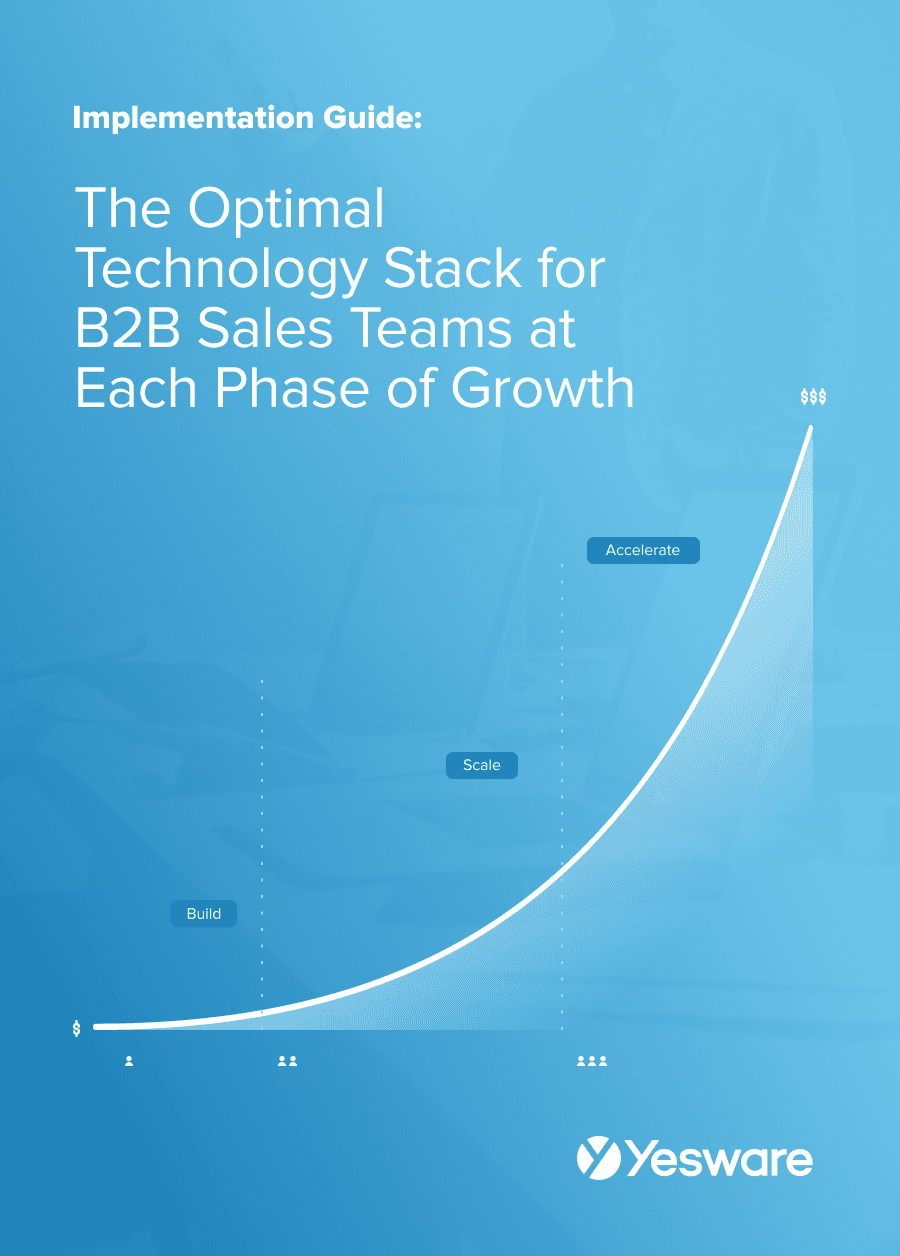 The Optimal Technology Stack for B2B Sales TeamsUsing data from the most successful business-scaling models, we designed a blueprint for the exact technology your business needs at each phase of growth.
The Optimal Technology Stack for B2B Sales TeamsUsing data from the most successful business-scaling models, we designed a blueprint for the exact technology your business needs at each phase of growth.
Sales Budget Best Practices
The following best practices will help you create an accurate and reliable sales budget.
Prepare for Unexpected Expenses
Perhaps the most universal piece of advice for sales budget creators: always leave wiggle room. Plan for unexpected expenses to arise, and build it into your sales budget — in practice and on paper.
One of the many things learned from the pandemic is that supply chain and consumer behavior disruptions can happen overnight at any time. Your sales budget needs to allow for the economic uncertainty of today’s world.
Plan Your Objectives
The effectiveness of your goal-setting process correlates directly to the success of your sales budget. Use the SMART sales goal framework when setting goals to ensure that your targets are clear, attainable, and measurable. 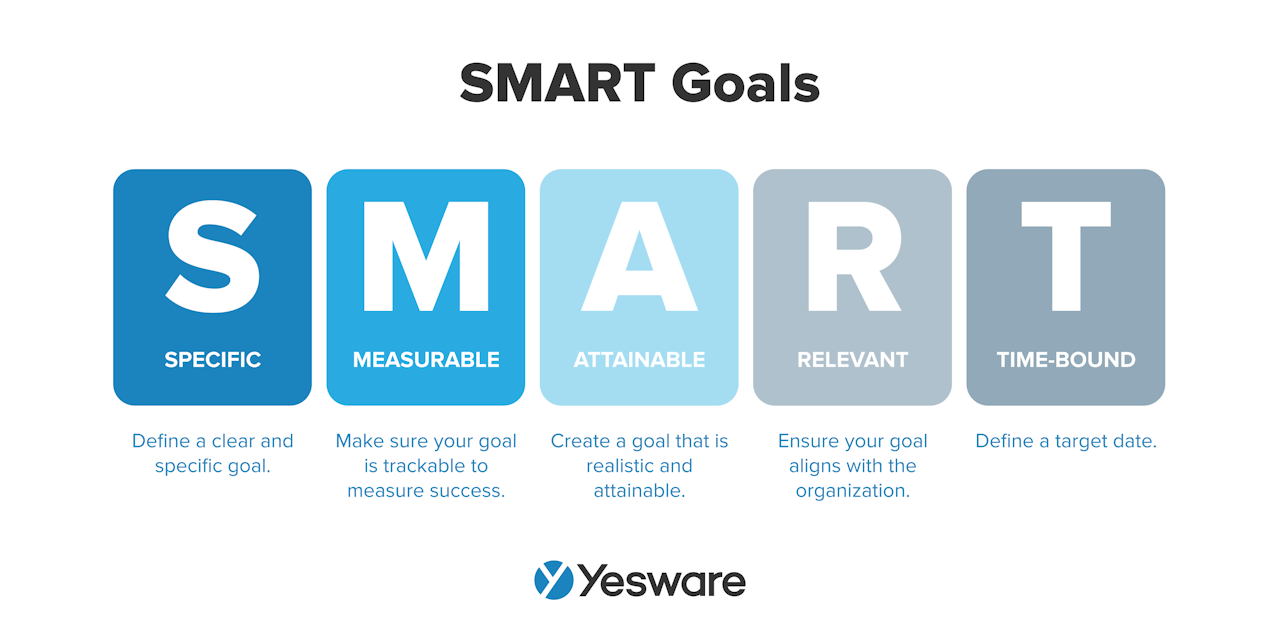
Outline Key Activities
Alongside your sales goals, you’ll also need to describe the key activities each sales rep needs to take to achieve them.
A detailed sales process map can help each player know their exact role during each stage of the journey. 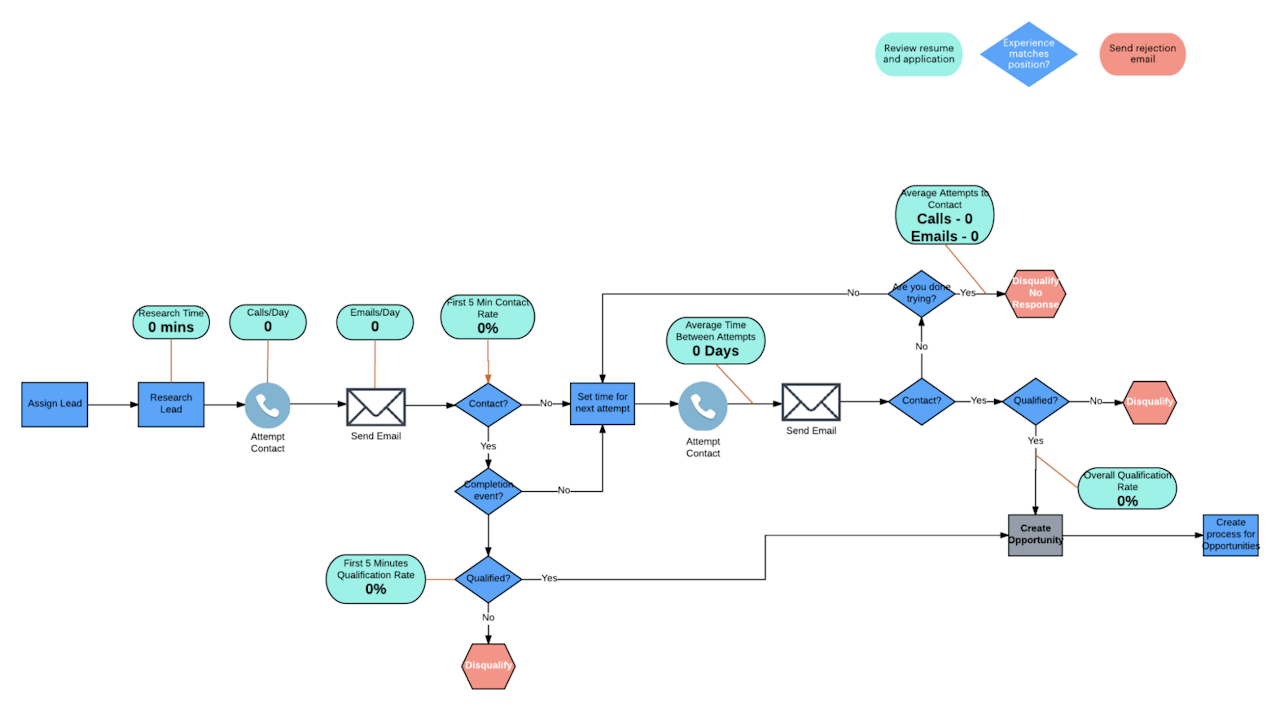
Be Meticulous With Your Data
Just like everything in sales, sales budgets need to be carefully tracked and analyzed in order to get the most benefit from them.
Make sure everyone on your team is aware of the expectations around sales budget data collection: what to track, when, where to store it, and when and how it will be analyzed.
Be Proactive
Sales budgets are data-heavy documents, but they also require a decent amount of nuance and even some intuition.
Think carefully about how you envision your upcoming sales period. Are any of your sales reps really coming into their own? Or, conversely, are you overhauling your training regimen, where a ramp-up period might be expected?
Think, too, about your buyer. How has their behavior trended over the last several periods?
Lastly, take into account your perception of the market and economy as a whole.
While you certainly don’t want to rely strictly on your hunches, it’s okay to take into account a little bit of instinct and data-driven hypothesizing when you create your sales budget.
Sales Budget Examples
Here are a few examples of sales budgets.
Sales Budget with Discount
This sales budget shows sales projections for a single product and accounts for a year-end 10% off sale.
Product 1: Annual Sales Budget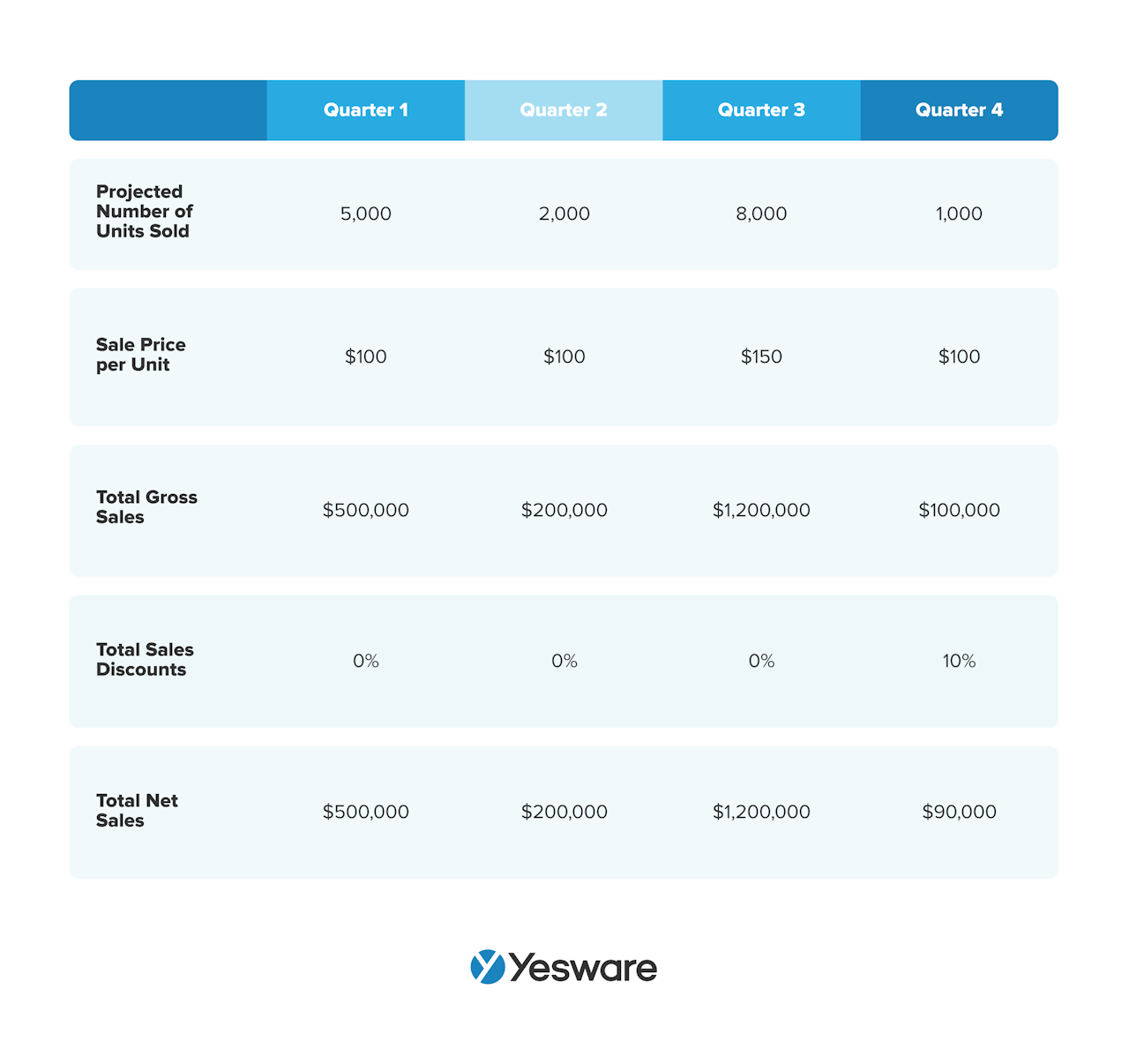
Sales Budget with Multiple Products
Here’s an example of a sales budget that details projections for a team that’s launching a new offer this year and planning to increase the price in the fourth quarter. 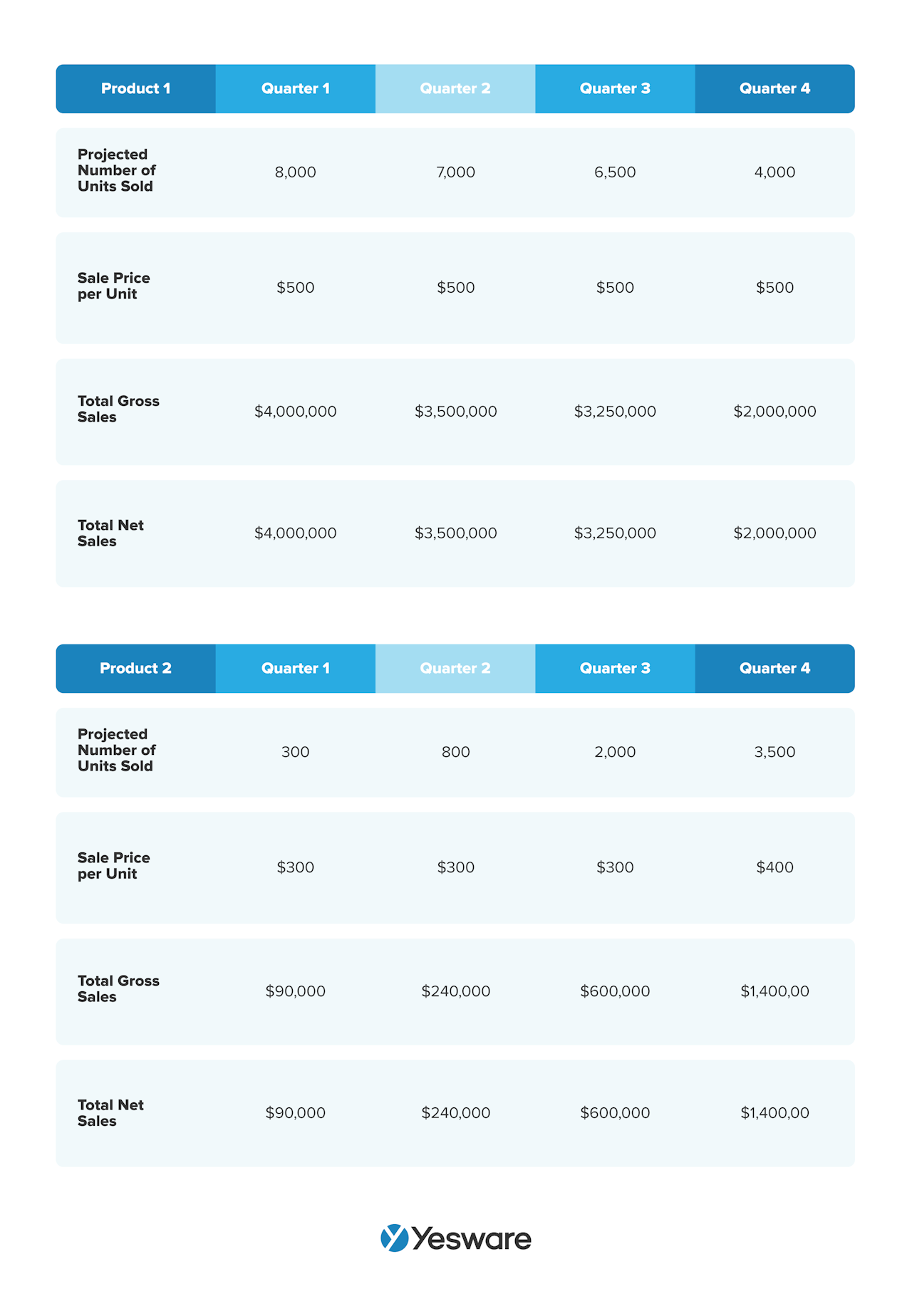
Sales Budget by Territory
Here’s an example of an annual sales budget broken down by region.
Product 1: Annual Sales Budget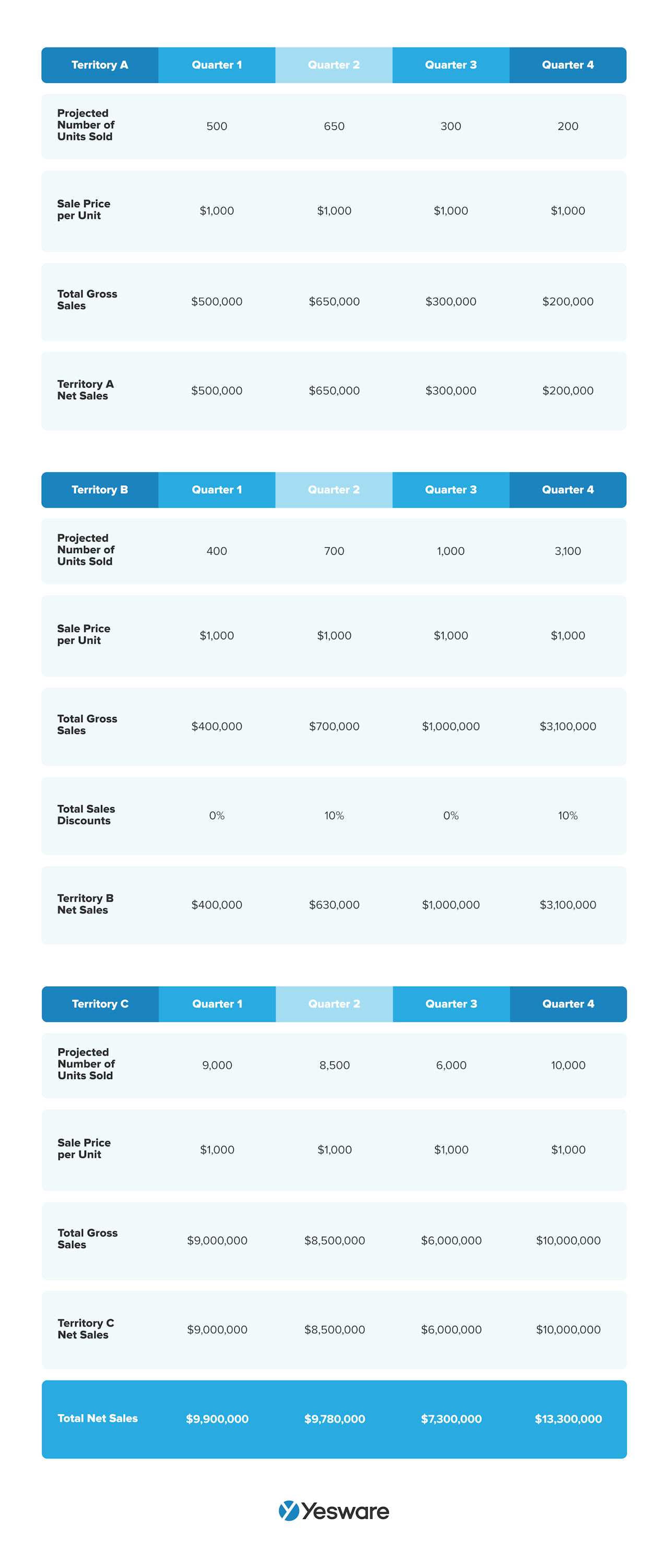 All-in-all, sales budgets are a necessary piece of a smoothly operating business.
All-in-all, sales budgets are a necessary piece of a smoothly operating business.
Implement these techniques and best practices today to strategize more effectively and maximize profits.
Get sales tips and strategies delivered straight to your inbox.
Yesware will help you generate more sales right from your inbox. Try our Outlook add-on or Gmail Chrome extension for free, forever!
Related Articles
Casey O'Connor
Casey O'Connor
Casey O'Connor
Sales, deal management, and communication tips for your inbox

